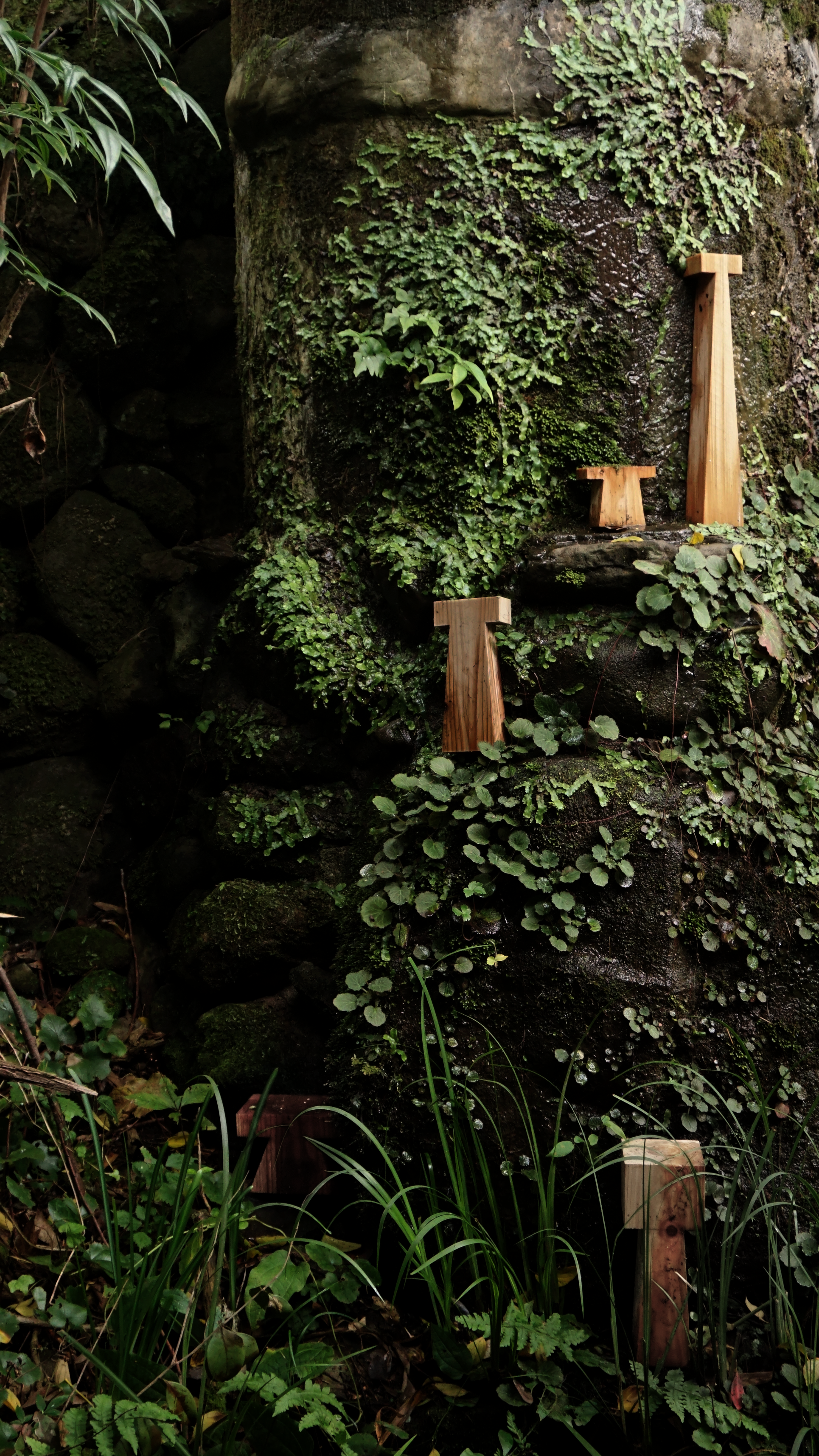Kokeshi
Northern Kyushu, JAPAN2019
This is the name my carpenter aunt would affectionately call the sculptures that I gradually began to populate her wild garden with in the depths of the northern Kyushu mountains.
I have left some in moist crevices in the garden hoping the moss will overcome them, in much the same way moss covers wooden grave posts in cemeteries in Japan. Whilst Kokeshi have been associated with guarding the souls of children, they are now primarily seen as a decorative art form. I wanted to create a group that characterises human individuality whilst celebrating our commonality and oneness with nature.
Without the need for painting human features, I’ve found character in altering the ratios of this very simple geometry: a rectangle on top of a trapezium - in contrast to the traditional Kokeshi that are cylindrical with a round head.
This idea stemmed from a small off-cut that fell one day from cutting a half-lap-dovetail joint for one of the foundation beams of the house we were building. Finding the composition of the off-cut pleasing, I saved it from the firewood box and placed it on the workshop window sill for a couple of weeks. Seeing it everyday, I then composed groups of characters to harmonise with and complement the original piece.
The Kokeshi have been made with cypress and cedar woods, echoing the materials of traditional Japanese dwellings. As with the construction of columns, each character has been sawed, planed and chiselled so that it remains standing in the direction in which it grew. By arranging them in accordance with the north-south orientation in which each tree grew, a harmony and dialogue comes into being that I could not have achieved alone.
Cypress and cedar
Kyushu, Japan
2019




